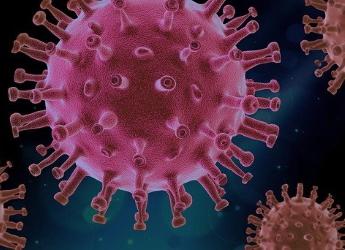UK food and nutrition security during and after the COVID-19 Pandemic
Based on these findings, the report goes on to raise some key questions and provide responses:
Will the pandemic drive change? A fundamental question becomes “has the pandemic been a sufficiently impactful event large enough to drive change in the food system?”. Our conclusion is that it has not, on the basis that supply was maintained. The pandemic has primarily caused a demand-side shock, not a supply-side one.
A second following key question thus needs to be asked: “Do we have a false sense of national food and nutrition security?”. There is a substantial risk that the overall conclusion drawn to the first question is that the current structure of the food system is resilient because it maintained supply and that a sufficiently large enough majority of businesses remained financially viable (indeed for some, profits increased). This risks development of a false sense of security and over-confidence in the ability of the food system to cope with future sporadic, multi-faceted and geographically diverse production-based shocks which may have unpredictable cascading consequences through food price rise impacts and differences in geopolitical responses.
Lessons learned from the COVID-19 pandemic. Whilst the pandemic has affected everyone, it has had differentiated impacts on society and economic sectors. This has been termed the “K” response. In respect of learning from this experience and developing strategies for improving food and nutrition security, in the UK and globally, the key lessons include:
- Prevention is better than cure: the Global Preparedness Monitoring Board estimates the pandemic response costs so far at $11 trillion, with a future loss of $10 trillion in earnings, whereas preparing for a pandemic would have cost the world $5 per person.
- Potential negative effects of the pandemic have been avoided by food trade between countries remaining relatively stable. There is a need to maintain international trade and not impose export restrictions, to maintain the flow of food and materials to enable its production.
- It is essential to maintain supply-side capabilities when the demand-side is impacted by economic access difficulties, otherwise production shortages will drive price rises compounding economic hardship.
- The pandemic impacted already vulnerable people the most, particularly those on low incomes, women and some ethnic groups who saw further reductions, or those who lost their income source, for example, those excluded from the furlough scheme. Government supports schemes helped alleviate the worst of the impacts by reducing economic access issues and hence food and nutrition insecurity, but there remained a heavy reliance on the third sector to provide additional support.
- Policies and financial support can respond at scale and speed when necessary.
- Governmental responses to the pandemic stress-tested the reliability of the global food system, revealing the potential for supply disruptions to global trade as border friction increased. In the UK, Brexit compounded border friction in our busiest trade routes. The complexity of the interactions in the system made predictions extremely challenging.
The need for preparation: To develop a food system that will better cope with future production shocks due to climate change, biodiversity loss and ecosystem degradation and improve resilience for food and nutrition security, the primary lesson from the pandemic is that prevention is better than cure, and that preparation and contingency planning can reduce the severity of impacts.
The food system has not been stress-tested by the pandemic. The primary stress on the food system during the pandemic was a demand-side shock. However, climate change, biodiversity loss and ecosystem degradation are likely to cause supply-side shocks, for which the food system has not yet been stress tested.
An opportunity to reflect and adapt. The pandemic is an opportunity to pause and reflect on what society wants from the way our economies are structured and organised. A key part of this is how we build a safe and resilient food system that ends hunger and malnutrition, is equitable, economically viable and improves human and environmental health. Given the scale of transformation needed to achieve these multiple objectives, it is essential to establish fora through which a diversity of stakeholders can voice their experience and concerns, to enable meaningful dialogue on developing solutions. This necessitates the opportunity to challenge the power relations in the food system and develop a shared vision of what a sustainable, resilient and equitable food system looks like and how this can be achieved.
Looking Forward: The Decade of Change. The United Nations has described this as the Decade of Change in recognition of the challenges society faces in meeting the Sustainable Development Goals in the face of the climate, biodiversity and ecological health crises. At the core of the SDGs is the need to end hunger and achieve food and nutrition security for all people. The actions needed to meet these challenges must be rapid and at scale: reduce greenhouse gas emissions immediately; adopt sustainable environmentally beneficial food production practices; restore degraded ecosystems; align land and marine use for food production, processing and retail with healthy diets; develop safety nets to protect the most vulnerable when shocks occur; internalise the human and environmental costs within the food system.
Project Publications:
Papers:
Rivington, M., King, R., Duckett, D., Iannetta, P., Benton, T.G., Burgess, P., Hawes, C., Wellesley, L., Polhill, J.G., Aitkenhead, M., Lozada‐Ellison, L.‐M., Begg, G., Williams, A.G., Newton, A., Lorenzo‐Arribas, A., Neilson, R., Watts, C., Harris, J., Loades, K., Stewart, D., Wardell‐Johnson, D., Gandossi, G., Udugbezi, E., Hannam, J. and Keay, C. (2021), UK food and nutrition security during and after the COVID‐19 pandemic. Nutr Bull, 46: 88-97. https://doi.org/10.1111/nbu.12485
Reports:
- UK food and nutrition security during and after the COVID-19 pandemic. The James Hutton Institute, Chatham House, Cranfield University. 14th December 2021. Final report (Deliverably 6).
- UK food and nutrition security in a global COVID-19 context: an early stock take, Chatham House, ResourceTrade.Earth website. 6 November 2020 (Deliverable 1 Part 1).
- UK food and nutrition security in a global COVID-19 context: an update, Chatham House, ResourceTrade.Earth website. 8 March 2021 (Deliverable 1 Part 2)
- Implications of COVID-19 for UK food supply resilience: Risks to food and nutrition security during and after the pandemic. Chatham House, 3rd December 2021 (Deliverable 1 Part 3)
- An overview assessment of the COVID-19 pandemic on the UK food and nutrition security, James Hutton Institute. 20 August 2021 (Deliverable 2).
- Scenarios for UK Food and Nutrition Security in the wake of the COVID-19 Pandemic, James Hutton Institute. 20th August 2021 (Deliverable 3) – Also available on Zenodo
- Post-COVID-19 land use options to achieve food security, healthy diets and a sustainable environment. James Hutton Institute and Cranfield University. 12th December 2021 (Deliverable 4)Exploring COVID-19 Food and Nutrition Security Plausible Scenario Narratives with the ‘FeedUs’ Model of Global Food Trade. James Hutton Institute. 15th October 2021.
- Exploring the effects on UK food security and land use of four scenarios describing socio-economic responses to COVID-19. Cranfield University and James Hutton Institute, 5th October 2021 (Deliverable 5).
Related articles:
An ecological perspective of COVID-19 and the UK food system – Paul Burgess, Cranfield University.
Key Project Objectives:
- Assess the current response of global food systems.
- Assess UK food system responses and vulnerabilities.
- Assess cascading causation of further impacts within a common framework of differing plausible scenarios.
- Propose alternative agricultural land use, land management and supply / value chain relationships for improved UK self-reliance and long-term environmental sustainability.
- Identify spatial consequences on the environment of pandemic responses and opportunities for improved FNS and food system resilience through sustainable agriculture.
- Review lessons learned from the pandemic for adapting the food system to help achieve climate change and biodiversity goals.
- Disseminate results and provide recommendations to inform policy development to increase food system resilience.


